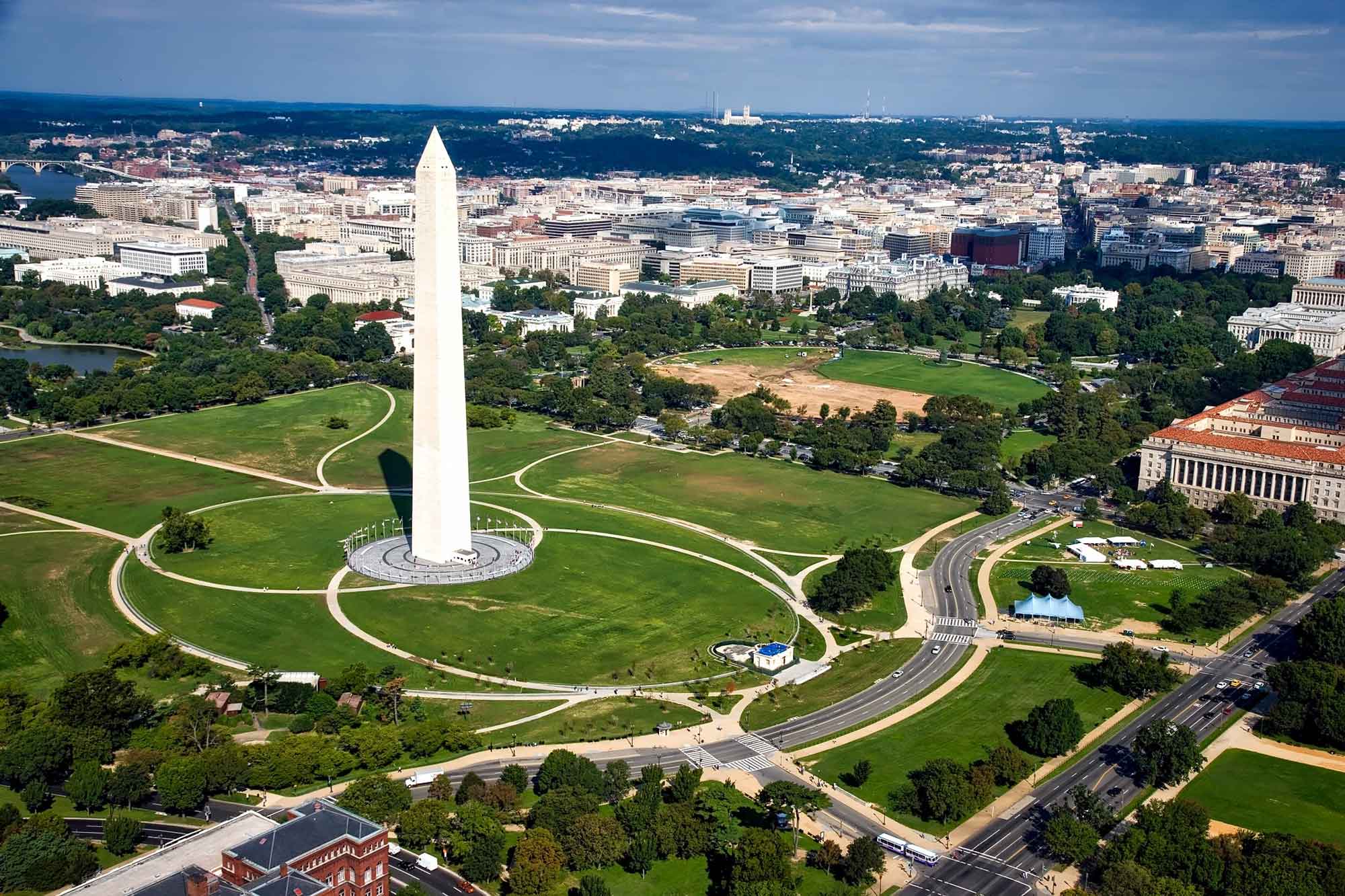
Welcome to the capital of the United States. A city of culture, colossal monuments, high-profile movers and shakers, a dynamic dining scene, and Japanese cherry trees that bloom along the Potomac River every spring.
Washington, D.C. isn’t just about power and power suits. It is also young, vibrant, fresh, and eclectic. The only way to get to know all of Washington, D.C.’s many facets is to live here to experience all the city has to offer.
History highlights:
- Washington, D.C. was founded on July 16, 1790. It’s the only city in the country that was established by the U.S. Constitution.
- The city’s grid layout, with the Capitol at the heart, was designed by a Parisian named Charles L’Enfant. He was hired by George Washington.
- Washington, D.C. suffered heavily during the War of 1812 when British forces burned most of the city. In the aftermath, the city decreased in size. Parts of the land ceded by Virginia were returned, while residents of Alexandria voted to leave the capital. It was only in 1862 when D.C. started to grow once again, including Georgetown and other surrounding areas within the fold.
- For most of recent history, Washington, D.C. has continued to expand. About 200 years since its establishment, it’s now a cultural melting pot and one of the most progressive cities in the country.
Sorry we are experiencing system issues. Please try again.
Washington, D.C. Real Estate
The Washington, D.C. real estate market is a cornucopia of housing options in different types and architectural styles, distributed in some of the most eclectic and vibrant neighborhoods in the country. To take a better look at homes for sale and real estate listings in Washington, D.C., taking a tour of the city’s four quadrants (Northwest, Northeast, Southwest, and Southeast) is an absolute must.
The Quadrants
Northwest Quadrant
The Northwest Quadrant isn’t just the largest in terms of total area. It hosts about half of the city’s population, not to mention the central business district as well as Washington, D.C.’s most revered academic institutions. It’s also in the Northwest Quadrant where you’ll find some of the city’s most coveted addresses.
Neighborhoods in the Northwest Quadrant include:
- Petworth
- Adams Morgan
- Dupont Circle
- Downtown
- Georgetown
- Logan Circle
- Shaw
- Kalorama
- Mount Pleasant
- Chevy Chase
Northeast Quadrant
Located in the Northeast Quadrant are some of Washington, D.C.’s most iconic landmarks, such as Capitol Hill and the US Supreme Court. Despite that, the area is mostly residential, with parks, schools, churches, and public transportation serving the area.
Neighborhoods in the Northeast Quadrant include:
- Capitol Hill
- Brookland
- Pleasant Hill
- Near Northeast
- Trinidad
- Edgewood
- H-Street Corridor / Atlas District
- NoMa
- Eckington
- Ivy City
Southwest Quadrant
In terms of land area, the Southwest Quadrant has the least space to offer, being the smallest of the four. Over the years, it has experienced a massive wave of gentrification. The end result is a highly compact pocket of Washington, D.C .with plenty of art, dining, and entertainment options.
Neighborhoods in the Southwest Quadrant include:
- Southwest Federal Center
- Bellevue
- The Wharf
- Buzzard Point
- Southwest Waterfront
Southeast Quadrant
Compared to its neighbor to the west, the Southeast Quadrant feels like it’s been relatively untouched by time. That said, it’s also one of the fastest growing areas in Washington, D.C., with more employment and entertainment options opening up in the quadrant.
Neighborhoods in the Southeast Quadrant include:
- Anacostia
- Congress Heights
- Navy Yard/Near Southeast
- Hillcrest
- Fairfax Village
Property Types and Architectural Styles in Washington, D.C. Real Estate
The Washington, D.C . real estate market has an incredible array of housing options, with different kinds of property types in various architectural styles available. Aside from the staple single-family homes and condos, property types in the city include townhouses, duplexes and multi-family residences, and tony mansions, penthouses, and luxury properties. Last but not the least are the row houses which have become synonymous with Washington, D.C. real estate.
Meanwhile, popular architectural styles in the local housing market include Federal, Craftsman, Bungalow, Colonial, Victorian, Tudor, and Beaux Arts. In addition to traditional styles, contemporary homes for sale are also available in Washington, D.C.
Living in Washington, D.C.
What’s the weather like?
All four seasons are well felt in Washington, D.C. Light snow usually accompanies wintertime in the city, with temperatures rather chilly. It gets milder as spring thaws the snow and the flowers bloom. In the summer, Washington, D.C. can get hot and humid and sometimes rainy. As the city foliage turns to shades of gold and red, temperatures in D.C. start to drop once again.
Are there schools and universities in the city?
The answer is a resounding yes. Public schools in Washington, D.C. are under the supervision of the District of Columbia Public Schools (DCPS). There are also over 90 private schools in the city such as The Field School, Sidwell Friends School, and National Cathedral School.
Colleges and universities in Washington, D.C. include Georgetown University, American University, and the George Washington University.
Discover Washington, D.C. Real Estate with Theo & Partners
Browse homes for sale in Washington, D.C. on our website or get in touch with our team for our assistance in buying or selling homes in the Washington, D.C. real estate market. Our team is licensed in Washington, D.C., Maryland, and Virginia, so we are able to help clients throughout the region find the perfect home.


